This is the eleventh post in my family culinary history series. To start from the beginning, please see my Connecting with my Ancestors through their Recipes post.
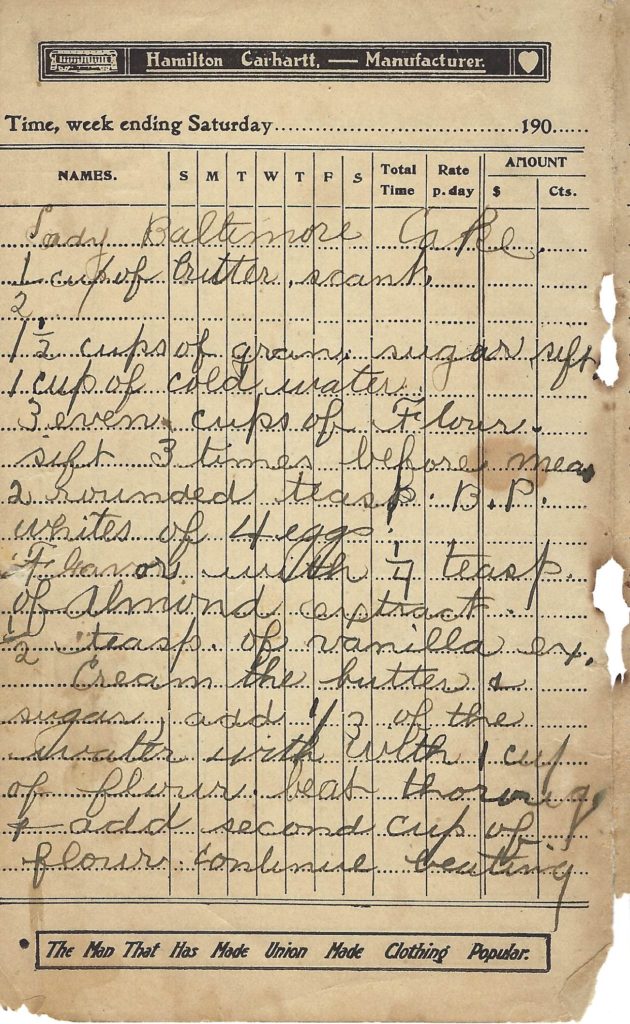
Lady Baltimore Cake
1/2 cup of butter scant
1 ½ cups of gran sugar sift
1 cup of cold water
3 even cups of flour
Sift 3 times before measure
2 rounded teasp B. P.
Whites of 4 eggs
Flavor with ¼ teasp of almond extract
½ teasp of vanilla extract
Cream the butter and sugar, add 1/3 of the water [unreadable] with 1 cup of flour. Beat together and add second cup of flour. Combine beating
Besides a love of making complex layer cakes, I wanted to try making this recipe because I had leftover dried figs, dried cherries, and pecans that I desperately wanted to use up. There was also an upcoming party full of hungry guinea pigs… er, I mean friends who would help me eat it.
And, to be fair, that all almost worked out. Almost.
Lady Baltimore vs Lord Baltimore Cakes
The Lady Baltimore cake is apparently a Southern classic, possibly even commonly used as a wedding cake because it could stand up to the heat of the South.
Interestingly, the cake is not actually named after a real person. According to Allison Robicelli (2017):
Alas, just like Betty Crocker and Mrs. Butterworth, the woman whose name appears alongside cake recipes in many of our cookbooks is fictional. History’s only actual Lady Baltimore (whose husband gave the city its name) never even set foot in the New World, died in 1649, and was in no way the inspiration for the confection. […] There are several stories that surround the origin of Lady Baltimore cake, but two facts can be concretely agreed upon: It first appeared sometime around the turn of the 20th century, and it has absolutely nothing to do with the city of Baltimore. It is a house of cards, a con job, a cake of deception.
This cake, it turns out, is a lie. Or at least the name is a lie.
While researching this cake, I also learned there are actually two variations of the cake, a Lady and a Lord. The Lord Baltimore version is actually almost identical to the Lady Baltimore version, but uses whole eggs instead of only egg whites which is supposed to make it denser and more like a pound cake.
Decoding the Recipe

Like all my great grandmother’s recipes, this one took a fair amount of reconstruction before it was in a state where I could actually attempt making it.
Besides the lack of clear steps which I have by now come to expect (they’re almost her culinary calling card at this point), she seems to have completely omitted the filling for the cake.
None of the other cake fillings listed in her recipe book made any sense, so I was forced to use one from a Lady Baltimore Cake recipe I found online.
Once I had figured out that missing piece and rewrote the instructions in a clearer format, I thought it would be relatively smooth sailing from then on.
I’m a slow learner.
Attempt Number One, A Unheeded Warning
The beginning of this baking adventure actually started a bit earlier than the party I mentioned at the start of this post. I had tried and failed to make the cake once before.
My mother and her friend were coming down to visit me, and I thought it would be cute to serve them the cake.
Sort of a grandchild eats grandmother’s cake made by great grandchild moment. You know, that classic scenario every family goes through.
No? Just my family? Well, I’m sure they’ll make a Hallmark movie out of it eventually if there isn’t one already and then it’ll be a classic story.
Anyway… I tried to whip up the cake only for it to fall flat on me, quite literally. The cake really never rose, it was barely half an inch tall if even that. I would have to make about four batches of the cake in order to have enough to make a real sized cake.
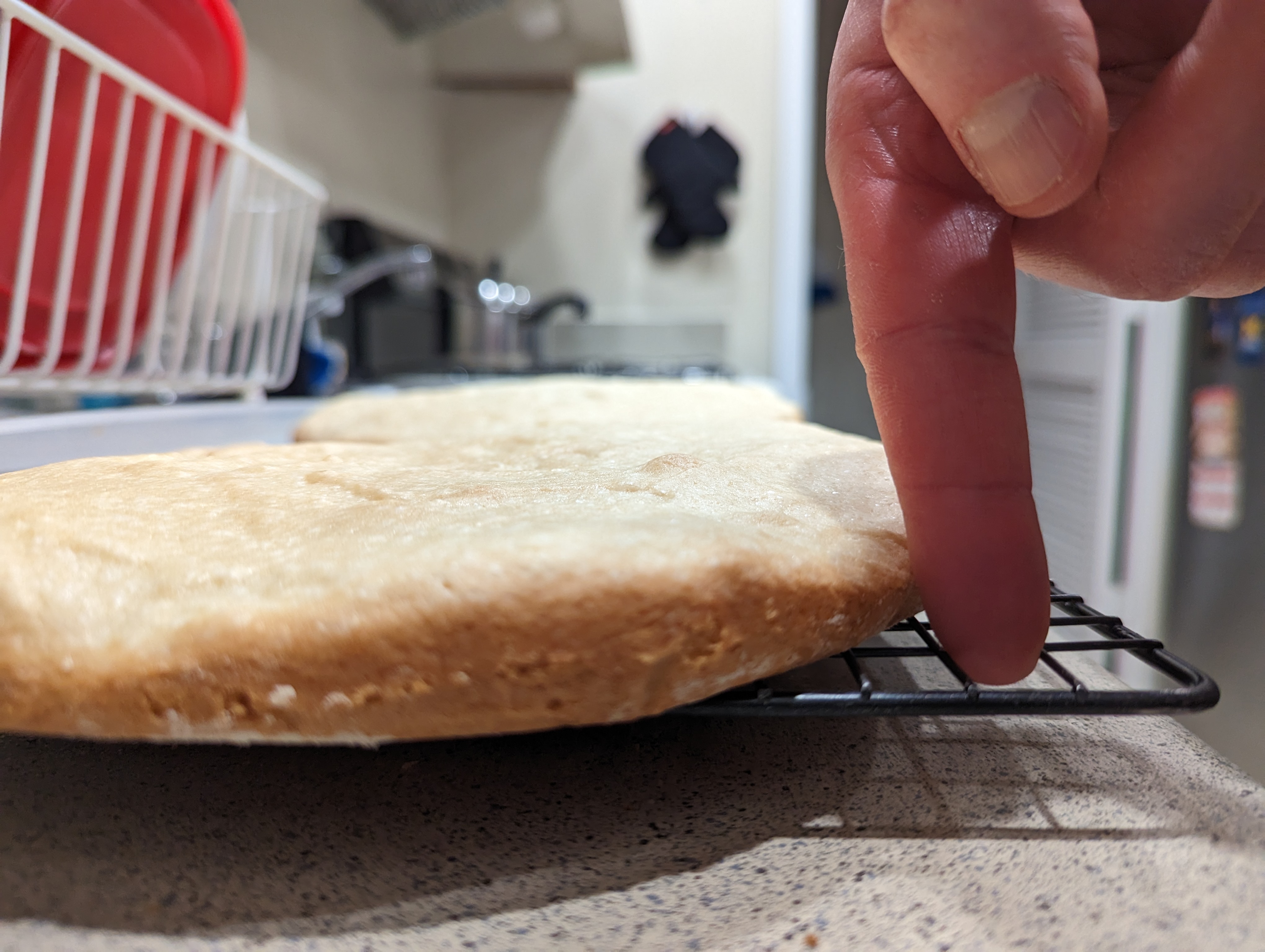
At first, I thought it was something wrong with the cake, like maybe it was missing enough leaveners. Turned out that was partially true, although more my fault than the recipe’s.
Turns out, the eggs (and extract flavorings) that I thought were meant for the frosting were actually meant to go into the cake. Looking back, it was a pretty obvious translation error on my part, but now I knew how to fix it.
So, to recap, I finally had a workable version of the original recipe, one that was actually missing both a filling AND a frosting. I stole a frosting recipe from the same source as the filling recipe, and then steeled myself for another run at the recipe.
Attempt Two, The Party
Ok, so now comes the scenario outlined in the beginning of this saga, the first attempt which actually resulted in a fully formed “cake.”
I put cake in quotation marks because I’m still not sure if what I made was a cake, a self-saucing bread pudding, or some sort of culinary homage to Salvador Dali.
The Cake
Despite rectifying my previous error and including the wayward eggs in the base of the cake, it still did not rise properly. I do not know why.
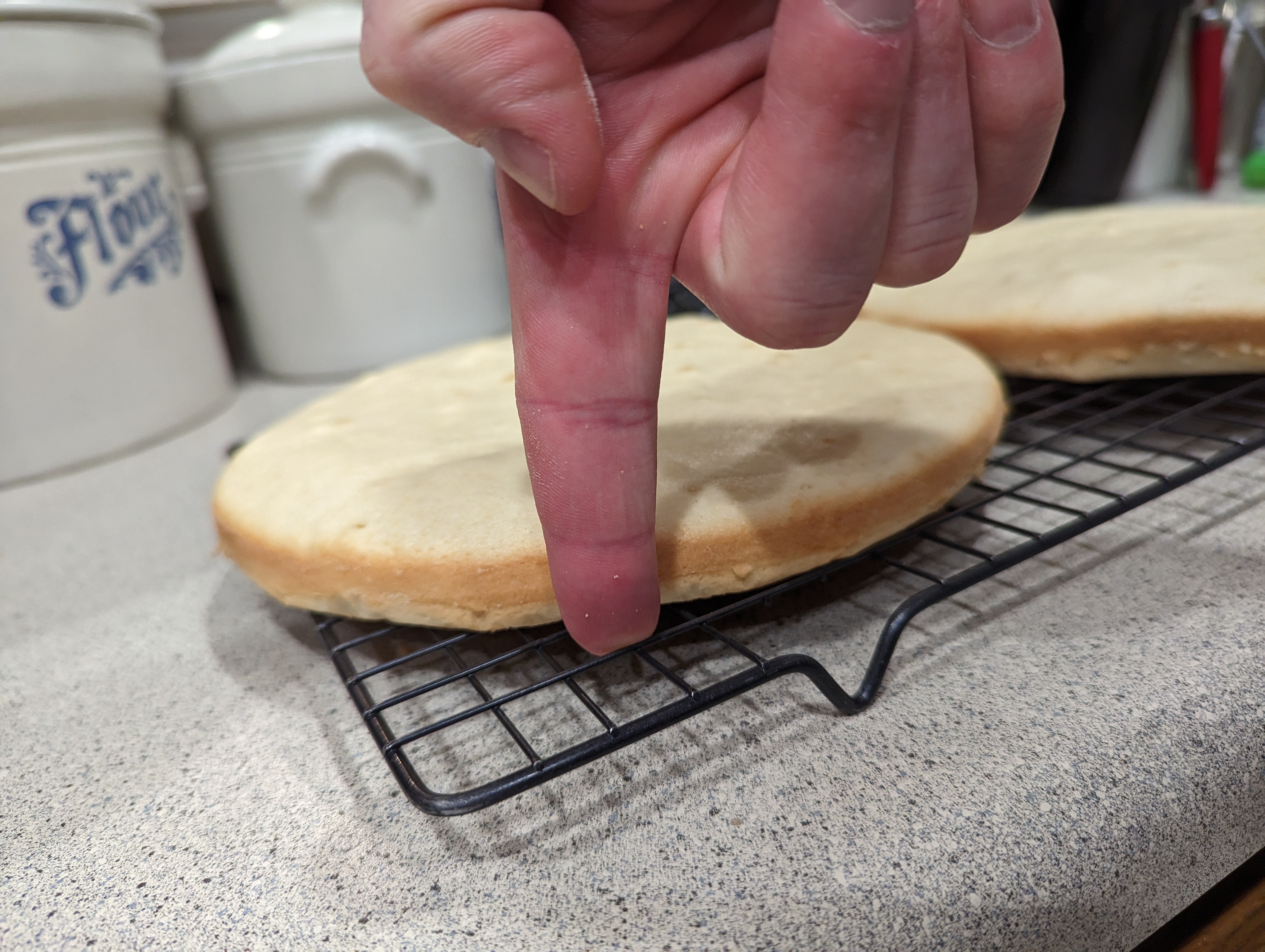
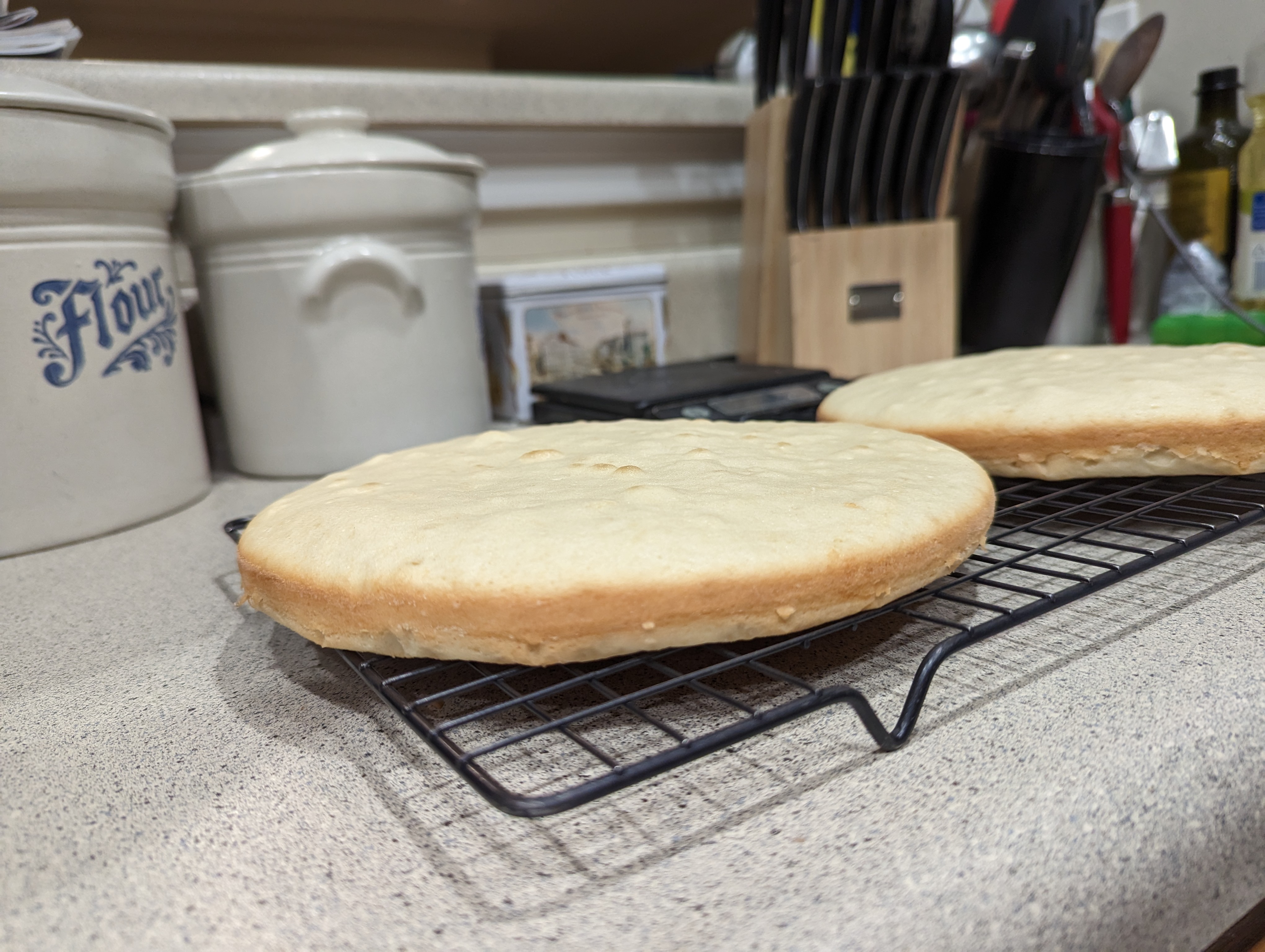
Maybe my baking powder is old… Quite likely, but it works for other recipes. Maybe I over whipped or under whipped something… But I have successfully made much, much more complicated cake recipes before so I am no amateur.
I am sure there is something chemically missing from the recipe, but I am surprised Irene would have missed something like that. Granted, she apparently missed the frosting and filling for the cake, but I assume she just filled those in from memory or something.
However, despite this, I decided to press on. I had already mixed all the ingredients for the filling and wanted to check the recipe off the list.
The Filling
As mentioned, I had already mixed the dried fruits and nuts for the filling assuming that this attempt would work now that I had fixed my earlier mistake with the eggs. And since I also had no other use for those ingredients, I figured I’d just try to make the cake anyway.
This might have worked if I had adjusted the amount of filling to match the cake layers, but for some reason I thought I could somehow make use up all the filling to create some sort of mega stuffed Oreo of a cake.

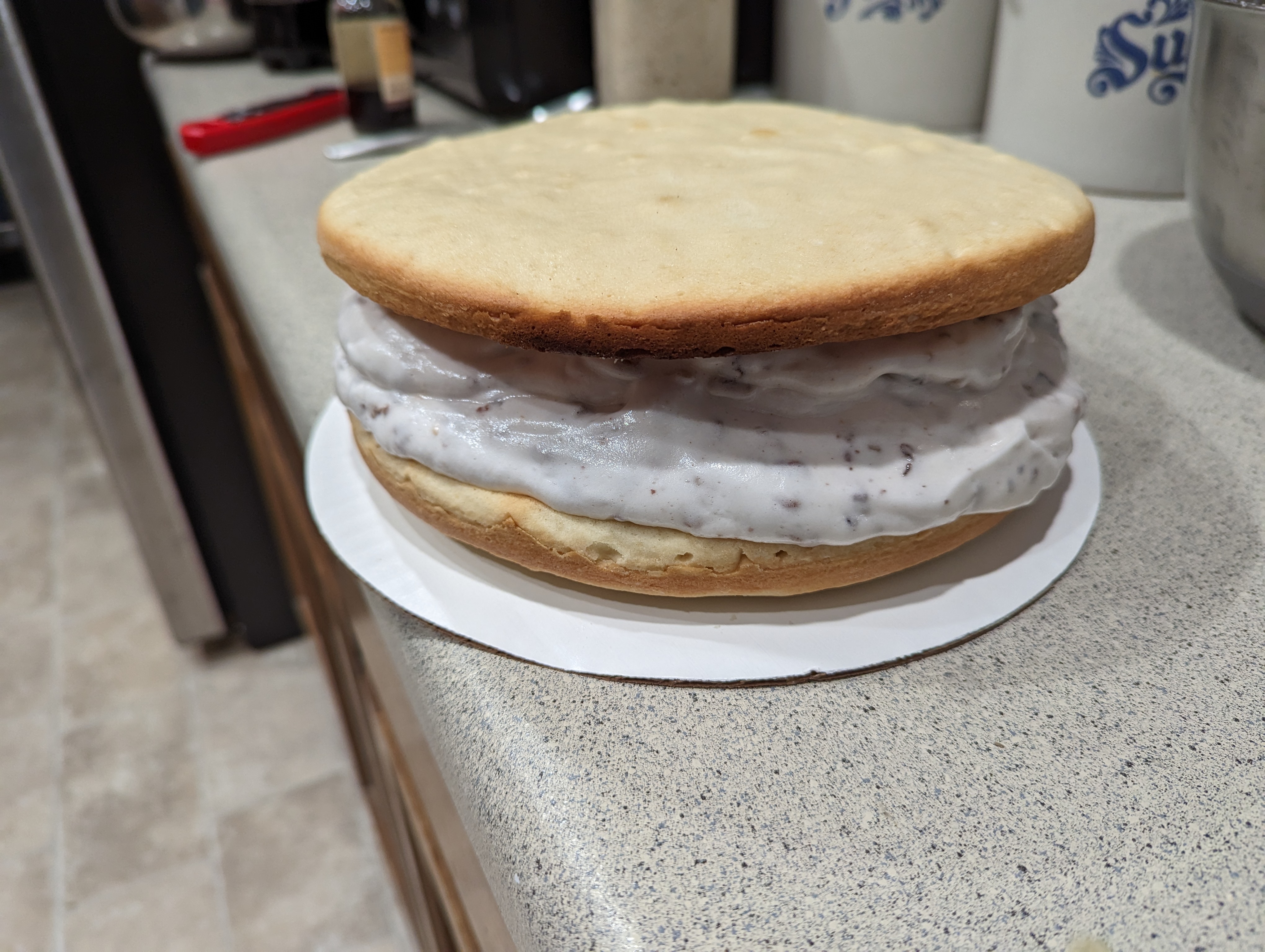
I like to think that this would have worked too if the frosting recipe I used did not come from the world of Salvador Dali. At least that’s what I tell myself.
The Salvador Dali Frosting
The final icing on this cake of disappointment was the frosting. I stole the frosting from what seemed like an extremely reputable source, one which was full of great historical information on Lady and Lord Baltimore Cakes.
However, either there was an issue with the frosting recipe or there was something wrong with the way that I prepared it because it was the first frosting that I have ever made that melted into almost liquid at room temperature.
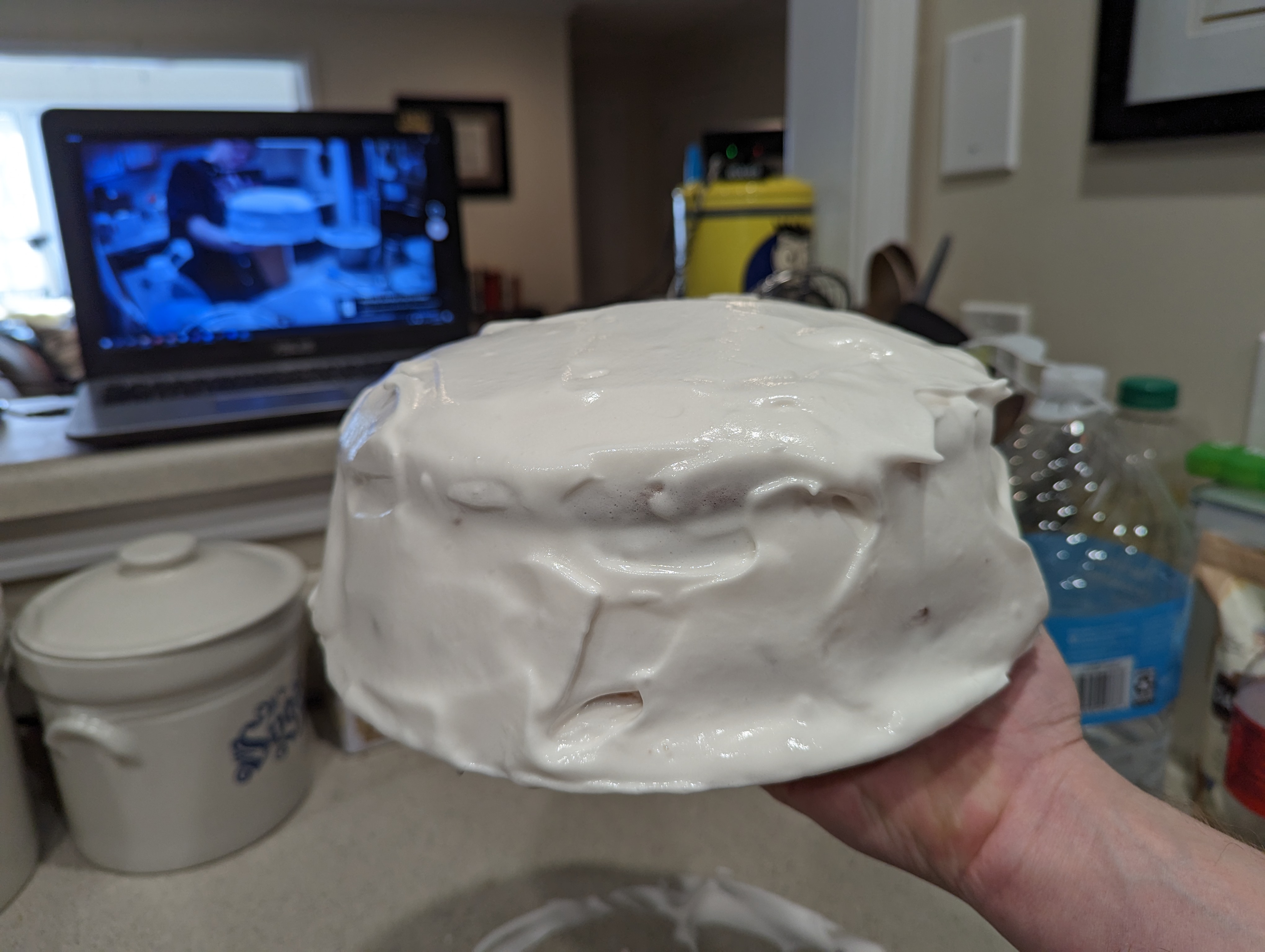
Even after the recommended stints in the freezer during frosting, it almost immediately melted and slid off the cake, hence the allusion to Dali if that wasn’t obvious.
Besides making the outside of the cake a mess, because the frosting got mixed into the filling as well it caused serious structural integrity issues for the cake overall.
If Lady Baltimore Cakes really were popular in the South due to being able to survive the heat, this can’t be the same frosting recipe that historically goes with the cake!
The Verdict
My party guinea pig taste testers all complimented the cake and ate a fair amount of it. However, I couldn’t help but notice that a decent amount of the cake remained at the end of the night.
There was a lot of other food at the party, but it’s clear the cake wasn’t the highlight of the buffet spread. Visually or based on taste.
My verdict was that it tasted decent enough despite the visuals. It was a pretty generic white cake, but there was clearly an issue with balance with the frosting and filling compared to the cake layers. Nothing about the cake was particularly memorable or mind-blowing.
So, while I created a modern version of the recipe based on my experiences, I cannot recommend anyone actually try even that recipe, and I will definitely not be making it again.
I wish I could ask Irene’s advice regarding the cake! Maybe she never even made it so it was never a tested and trusted recipe. Or maybe she prepared it differently somehow. Once again, I’m left with more questions really than answers.
Great Grandmother vs Grandmother
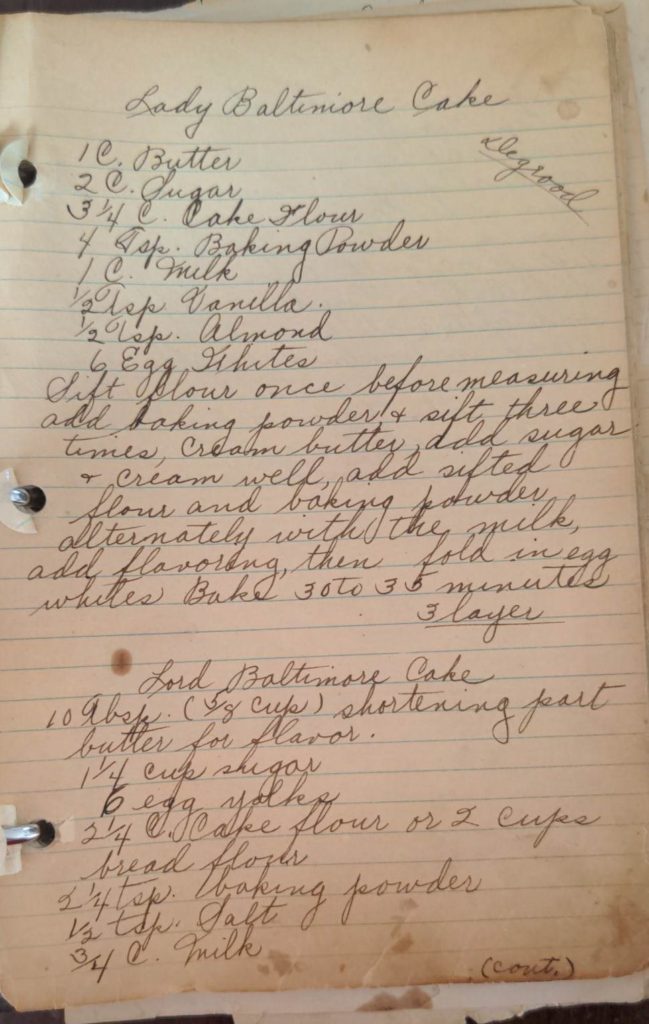
While I was struggling with Irene’s Lady Baltimore Cake recipe, my mother discovered a small trove of Clara’s (her mother’s/my grandmother’s) recipes which included not only another Lady Baltimore Cake recipe but also a Lord Baltimore Cake recipe.
Clara’s recipe looks much more complete, and I have more faith that it would turn out due to her background as a pastry chef. I am very curious to see if Clara’s recipe works and even thought about doing a head to head with Irene’s (although it hardly seems like much of a competition).
However, I think I could use a break from cakes for a little bit. There’s only so many friends I can force sweets on at a time!
Pictures and Video!
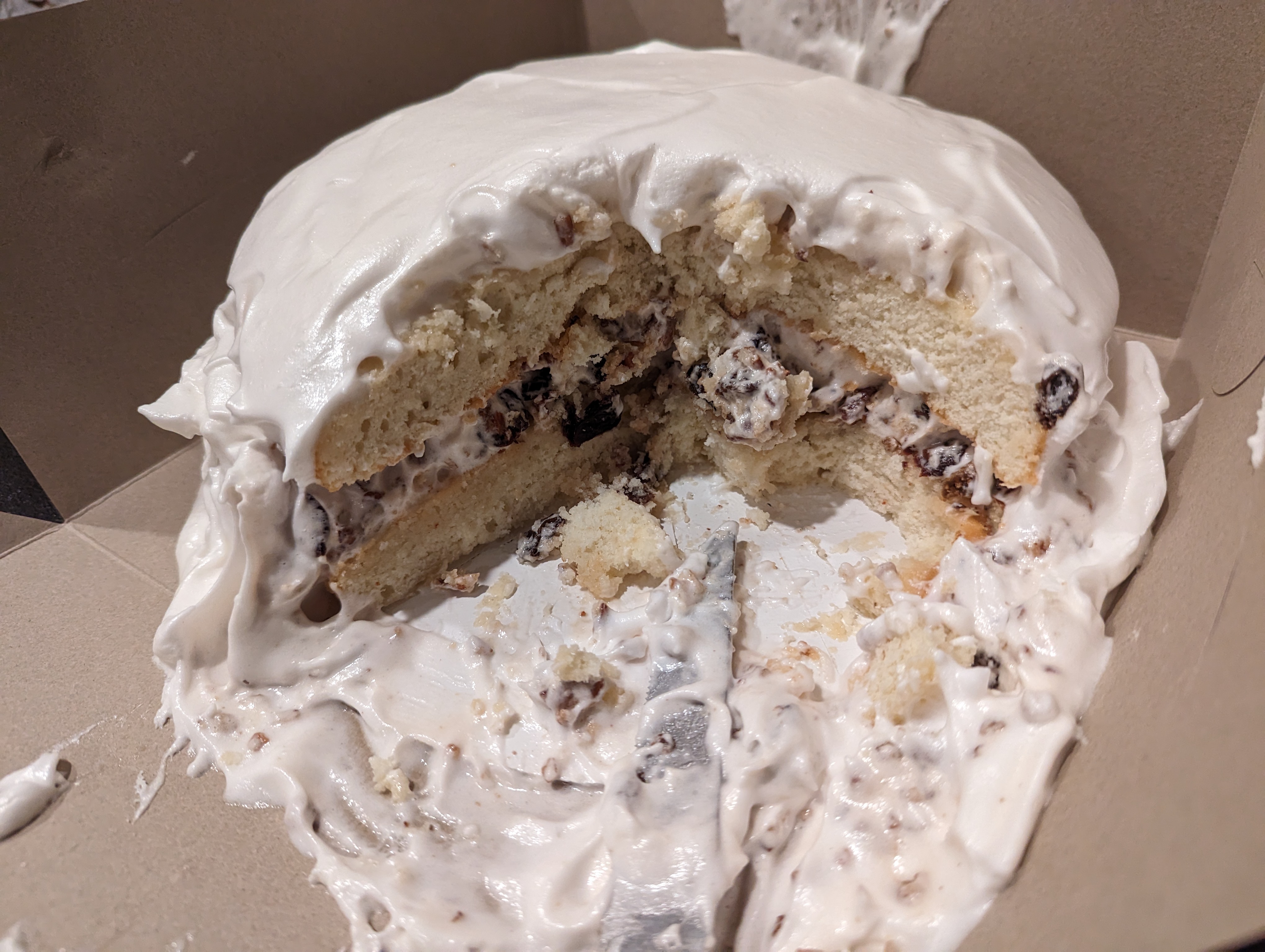
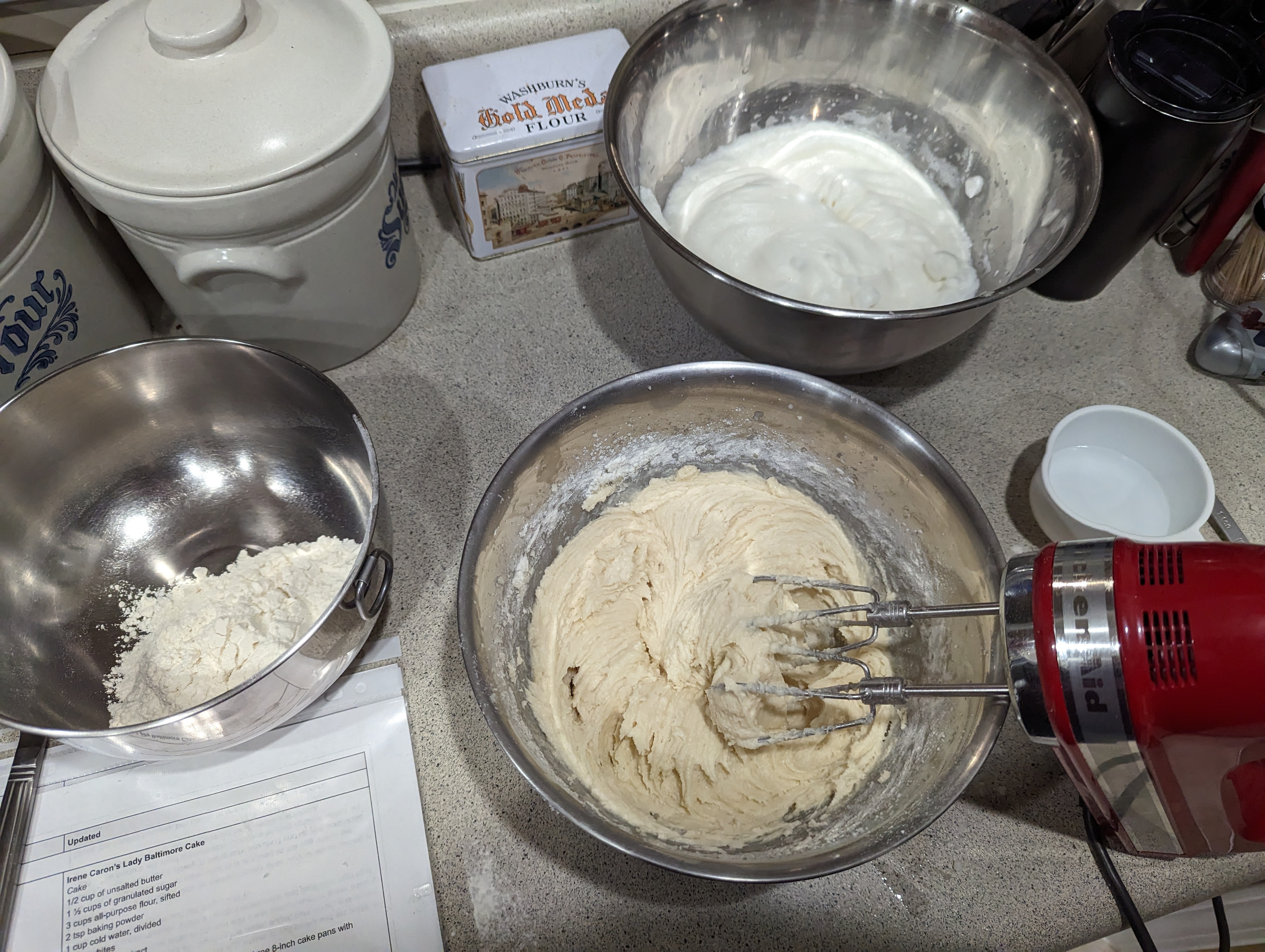
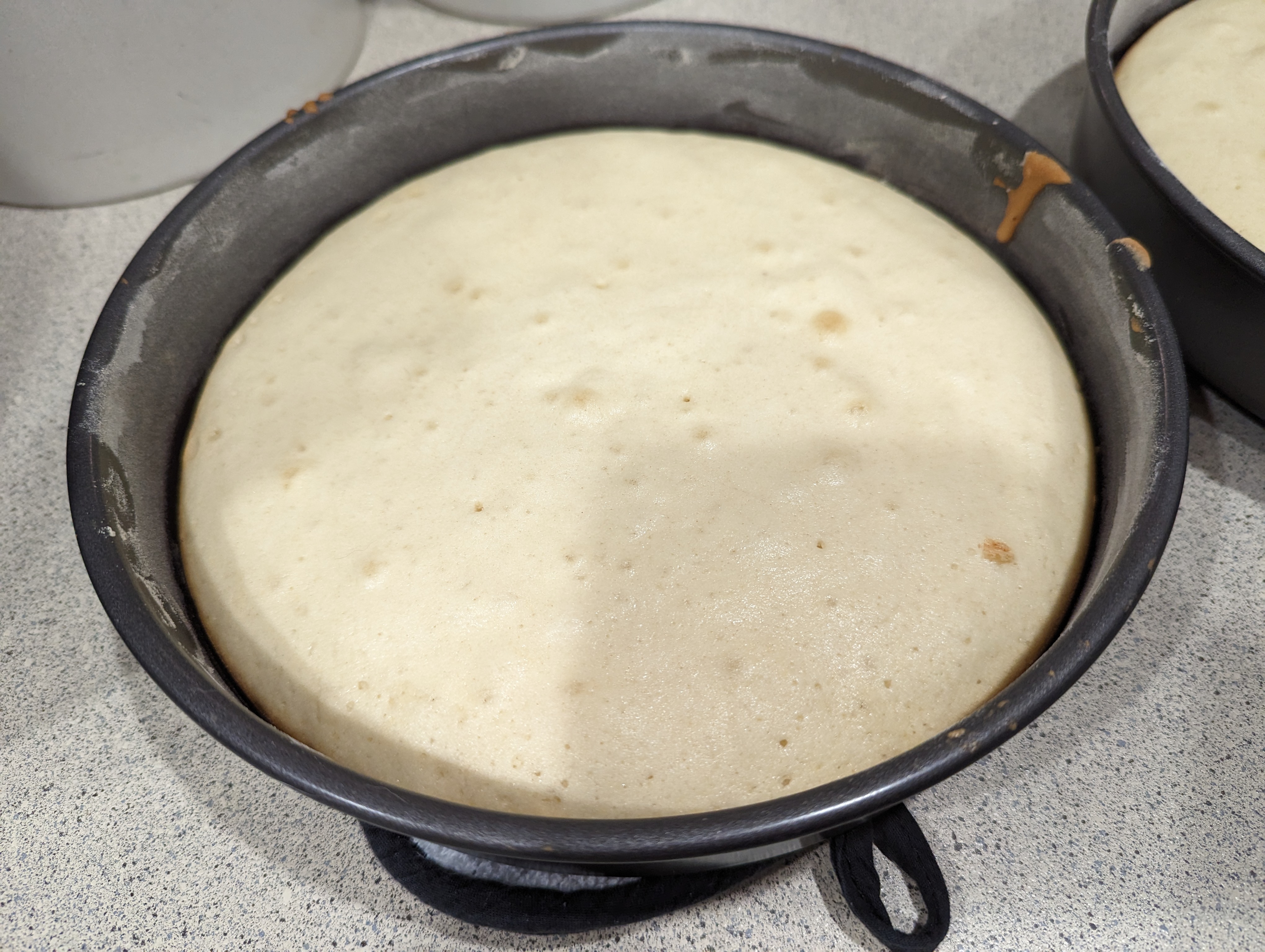
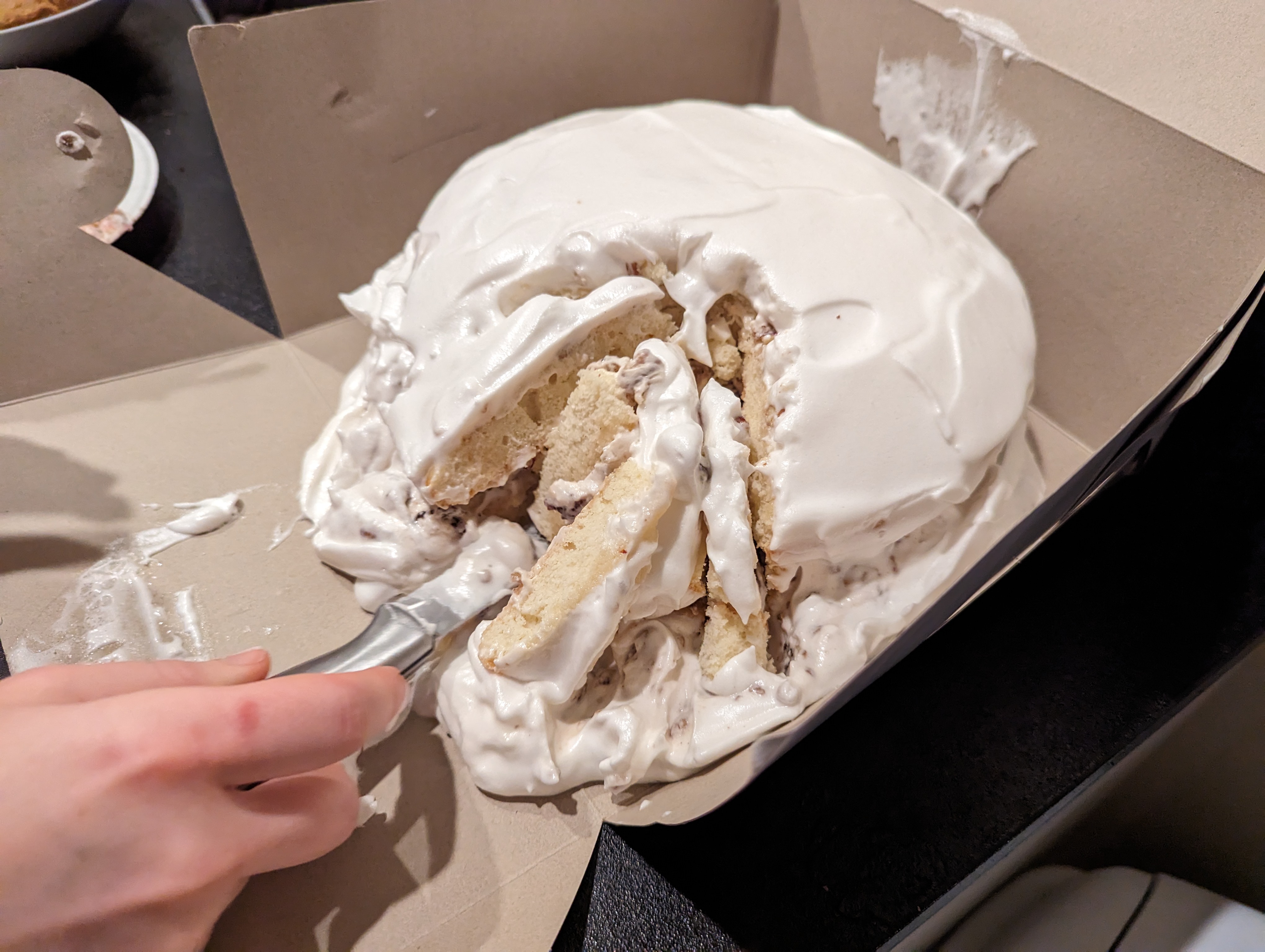

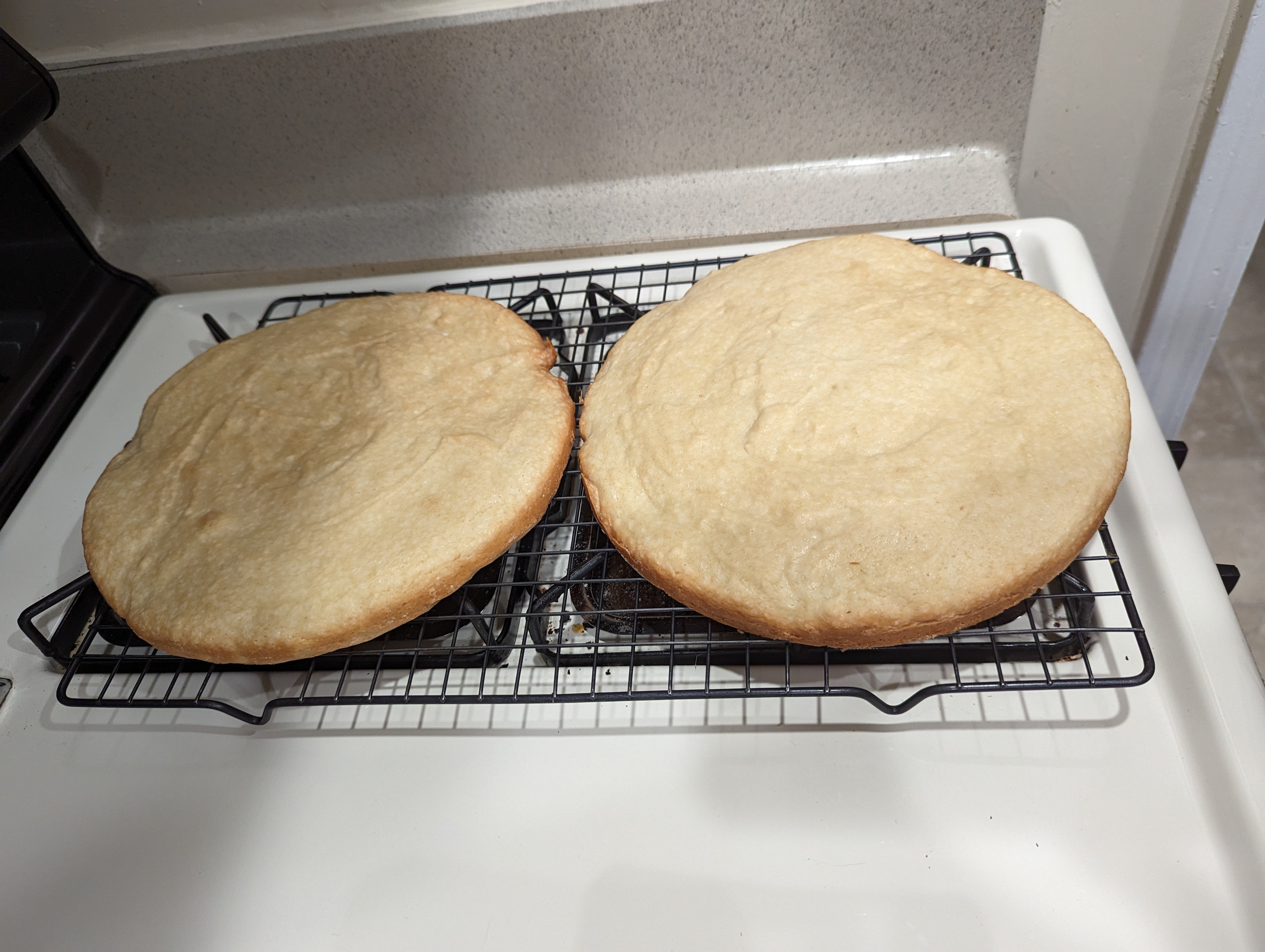




Updated Recipe

Irene Caron’s Lady Baltimore Cake
Cake
1/2 cup of unsalted butter
1 ½ cups of granulated sugar
3 cups all-purpose flour, sifted
2 tsp baking powder
1 cup cold water, divided
4 egg whites
¼ tsp almond extract
½ tsp vanilla extract
Preheat the oven to 350°F. Line the bottoms of three 8-inch cake pans with parchment, then lightly grease and flour the sides.
In a large bowl, cream the butter and sugar until light and fluffy. In another bowl, combine the flour and baking soda. In a separate mixing bowl, beat the egg whites until they are stiff but still moist. Beat in the extracts until just combined.
Stir a third of the flour mixture into the creamed butter, followed by a third of the water. Repeat until everything is combined. Gently stir one-third of the beaten egg whites into the cake batter. Then scoop up the remaining whites, drop them onto the batter, and fold them in.
Divide between the prepared cake pans. Bake for 20 to 25 minutes, or until a toothpick inserted in the center comes out clean. Remove from the oven and let cool in the pans for 5 minutes, then turn them out of the pans onto a cooling rack to cool completely before making the icing.
Simple Filling
1 ½ cup toasted pecans
½ cup raisins
½ cup dried figs, cherries, or dates
Elaborate Filling
¼ cup golden raisins
¾ cup sweetened coconut
¼ cup candied cherries
½ cup chopped almonds
¼ cup chopped pecans
1 tsp lemon juice
Frosting
4 egg whites
2 ¾ cup granulated sugar
¼ cup light corn syrup
¼ teaspoon cream of tartar
2 cups water
2 tsp vanilla extract
In a large stainless steel bowl, beat the egg whites to soft peaks and set aside. In a medium saucepan, gently stir together the water, sugar, corn syrup, and cream of tartar. Wipe down the sides of the pan with a wet pastry brush or paper towel to remove any sugar crystals. Insert a candy thermometer and cook over high heat until the mixture reaches soft ball stage: 235°F.
Continue beating the egg whites on medium speed while very slowly streaming in the boiling sugar (you can increase your rate of speed as the egg whites get hotter, but you must begin slowly to make sure you don’t end up with scrambled eggs). The mixture will swell considerably. Continue beating until the whites are cool, then add vanilla and continue beating for an additional minute.
Divide the frosting between two bowls. In one half, stir in filling mixture.
Assembly
Trim the cake layers so they’re even. Put half the filling on the first layer, top with the second, then place in the freezer for five minutes to allow to set. Repeat with the remaining filling and third layer. Remove cake from freezer and frost with remaining frosting. Allow to sit at room temperature to set for at least an hour before serving.
Credits
Bake From Scratch (2023) Lord Baltimore Cake. https://www.bakefromscratch.com/lord-baltimore-cake/
Lum, Linda (2022) Lord and Lady Baltimore Cakes: History and Recipes. https://delishably.com/desserts/Lord-and-Lady-Baltimore-Cakes
Robicelli, Allison and Schneider, Linda (2017) Who Is Lady Baltimore, Anyways? https://tastecooking.com/who-is-lady-baltimore-anyways/
Next Steps: Muffins (Good)
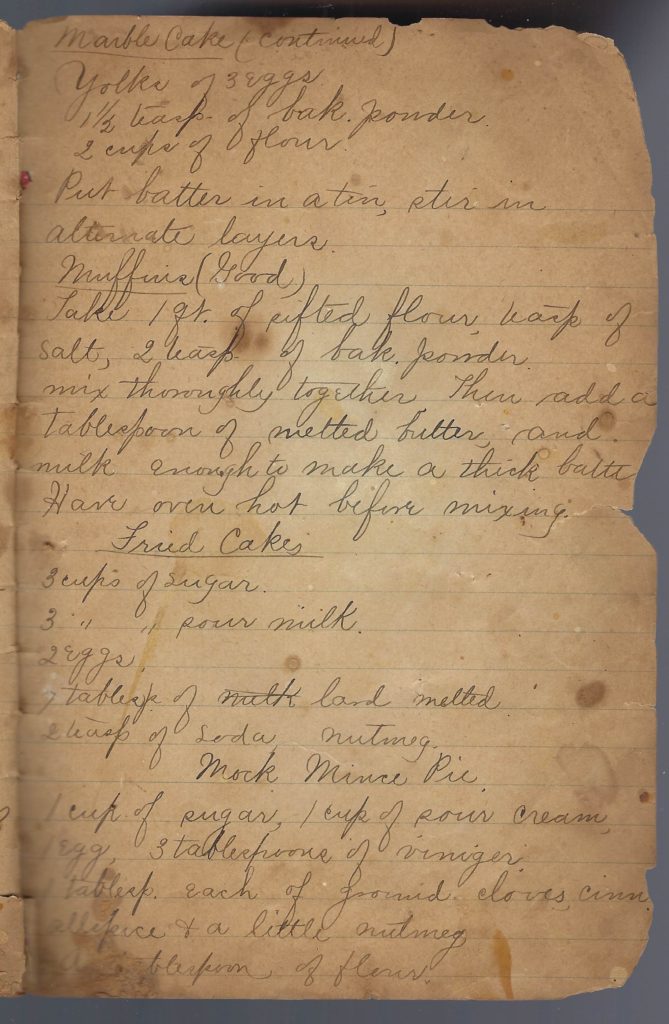
The next recipe I was planning to make is my great-grandmother’s muffin recipe!
Stay tuned for a post regarding my experiences making that recipe and the struggles I overcame while doing it!